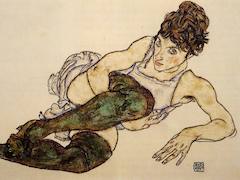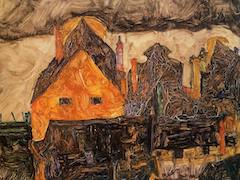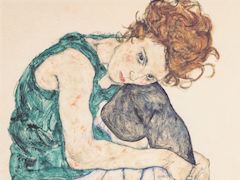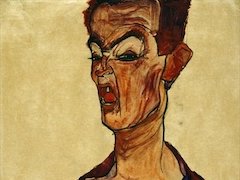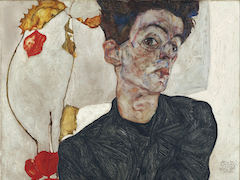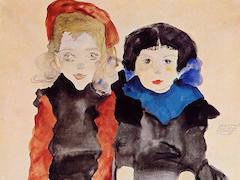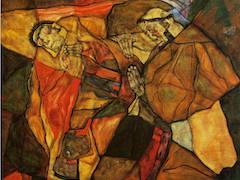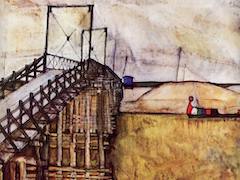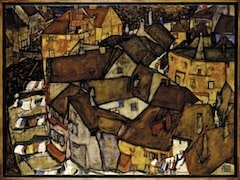Autumn Sun, 1912 by Egon Schiele
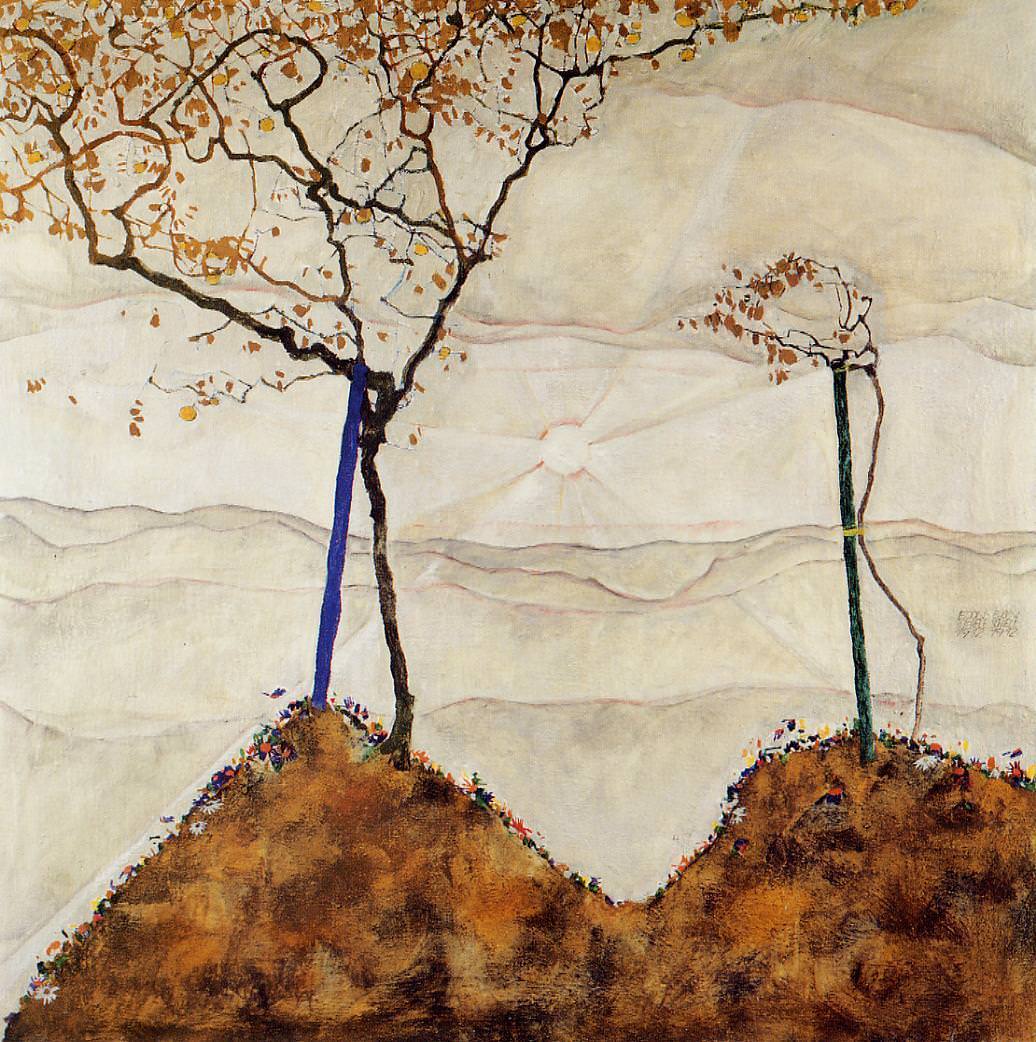
Egon Schiele is most often thought of in connection with the human figure - impression that derives from the predominance of such subjects among his works on paper. However, if one looks to his oil (which the artist considered his most important work), landscape subjects account for fully a third of the mature output. From an early age, Schiele had sought solance in nature. Long walks were his way of escaping from what he termed his "lifeless schooling" and from a home life grown increasingly disturbed and tenuous. Schiele identified closely with nature, in which he saw correlatives for human emotional states.
In this spirit, Schiele in 1911 embarked on a series of anthropomorphic tree "portraits" - a project he pursued over the course of the next year and, with diminishing intensity, for the rest of his life. There is a close kinship between the febrile trees of 1911 - 12 and the figures in Schiele's contemporaneous allegories. Both represent humankind's isolation in a hostile environment. The trees are typically rooted in cold, barren earth and silhouetted against a blank, unconsoling sky. Weak and frail, they almost invariably require supporting stakes and seldom carry more than a few leaves. "One experiences an autumnal tree in summer most profoundly," Schiele explained. "This melancholy I want to paint." Winter and autumn were for him the death forces against which the little trees vainly but nobly struggled.
Above all I observe the physical movements of mountains, water, trees, and flower. Everywhere one is reminded of similar movements in human bodies, of similar manifestation of joy and suffering in plants."
Compositionally, the tree portraits have an element structure that places them somnewhere between Schiele's more complex townscapes and his pared-down figure drawings. The interlocking, essentially horizontal forms of sky and earth are worked in various patterns against the vertical trunks. The simple, organic rhythm of these composition recalls the so-called Parallelism of the Swiss Symbolic Ferdinand Hodler, who was a great favorite of Schiele's. For Hodler, however, the parallel appearance of nature forms, such as trees in a forest, was indicative of a divine order and harmony, whereas Schiele saw in these same forms an intrinsic lonesomeness that may have evidenced God's desertion.

